
Rabbit Anti-CLK2 antibody
CDC like kinase 2; CLK 2; CLK kinase; Clk2 Scamp3; Dual specificity protein kinase CLK2; hCLK 2; hCLK2; MGC61500; Tu52; CLK2_HUMAN.
View History [Clear]
Details
Product Name CLK2 Chinese Name 细胞分裂周期样激酶2抗体 Alias CDC like kinase 2; CLK 2; CLK kinase; Clk2 Scamp3; Dual specificity protein kinase CLK2; hCLK 2; hCLK2; MGC61500; Tu52; CLK2_HUMAN. Research Area Cell biology Signal transduction Cyclin Kinases and Phosphatases Cell differentiation Epigenetics Immunogen Species Rabbit Clonality Polyclonal React Species Human, Mouse, Rat, (predicted: Chicken, Dog, Pig, Cow, Horse, Rabbit, ) Applications WB=1:500-2000 ELISA=1:5000-10000 IHC-P=1:100-500 IHC-F=1:100-500 IF=1:100-500 (Paraffin sections need antigen repair)
not yet tested in other applications.
optimal dilutions/concentrations should be determined by the end user.Theoretical molecular weight 60kDa Cellular localization The nucleus Form Liquid Concentration 1mg/ml immunogen KLH conjugated synthetic peptide derived from human CLK2: 401-499/499 Lsotype IgG Purification affinity purified by Protein A Buffer Solution 0.01M TBS(pH7.4) with 1% BSA, 0.03% Proclin300 and 50% Glycerol. Storage Shipped at 4℃. Store at -20 °C for one year. Avoid repeated freeze/thaw cycles. Attention This product as supplied is intended for research use only, not for use in human, therapeutic or diagnostic applications. PubMed PubMed Product Detail CDC-like kinase 2 (CLK2) belongs to a family of autophosphorylating kinases termed CLK (CDC2/CDC28-like kinases), which have been shown to phosphorylate serine- and arginine-rich (SR) proteins of the spliceosomal complex, and to influence alternative splicing in overexpression systems. Recent findings demonstrated that the CLK kinases activate PTP-1B family members, and this phosphatase may be an important cellular target for CLK action. Mutations in the CLK2 proteins affect organismal features such as development, behavior, reproduction, and aging as well as cellular features such as the cell cycle, apoptosis, the DNA replication checkpoint, and telomere length.
Function:
Dual specificity kinase acting on both serine/threonine and tyrosine-containing substrates. Phosphorylates serine- and arginine-rich (SR) proteins of the spliceosomal complex. May be a constituent of a network of regulatory mechanisms that enable SR proteins to control RNA splicing and can cause redistribution of SR proteins from speckles to a diffuse nucleoplasmic distribution. Acts as a suppressor of hepatic gluconeogenesis and glucose output by repressing PPARGC1A transcriptional activity on gluconeogenic genes via its phosphorylation. Phosphorylates PPP2R5B thereby stimulating the assembly of PP2A phosphatase with the PPP2R5B-AKT1 complex leading to dephosphorylation of AKT1. Phosphorylates: PTPN1, SRSF1 and SRSF3. Regulates the alternative splicing of tissue factor (F3) pre-mRNA in endothelial cells.
Subunit:
Interacts with RBMX. Interacts with AKT1 and UBL5.
Subcellular Location:
Isoform 1: Nucleus. Nucleus speckle. Isoform 2: Nucleus speckle.
Tissue Specificity:
Endothelial cells.
Post-translational modifications:
Autophosphorylates on all three types of residues. Phosphorylation on Ser-34 and Thr-127 by AKT1 is induced by ionizing radiation or insulin. Phosphorylation plays a critical role in cell proliferation following low dose radiation and prevents cell death following high dose radiation. Phosphorylation at Thr-344 by PKB/AKT2 induces its kinase activity which is required for its stability. The phosphorylation status at Ser-142 influences its subnuclear localization; inhbition of phosphorylation at Ser-142 results in accumulation in the nuclear speckle.
Similarity:
Belongs to the protein kinase superfamily. CMGC Ser/Thr protein kinase family. Lammer subfamily. Contains 1 protein kinase domain.
SWISS:
P49760
Gene ID:
1196
Database links:
UniProtKB/Swiss-Prot: P49760.1
Product Picture
Hela(Human) Cell Lysate at 30 ug
Primary: Anti-CLK2 (SL7907R) at 1/1000 dilution
Secondary: IRDye800CW Goat Anti-Rabbit IgG at 1/20000 dilution
Predicted band size: 60 kD
Observed band size: 60 kD
Paraformaldehyde-fixed, paraffin embedded (Rat colon); Antigen retrieval by boiling in sodium citrate buffer (pH6.0) for 15min; Block endogenous peroxidase by 3% hydrogen peroxide for 20 minutes; Blocking buffer (normal goat serum) at 37°C for 30min; Antibody incubation with (CLK2) Polyclonal Antibody, Unconjugated (SL7907R) at 1:400 overnight at 4°C, followed by operating according to SP Kit(Rabbit) (sp-0023) instructionsand DAB staining.Paraformaldehyde-fixed, paraffin embedded (Rat stomach); Antigen retrieval by boiling in sodium citrate buffer (pH6.0) for 15min; Block endogenous peroxidase by 3% hydrogen peroxide for 20 minutes; Blocking buffer (normal goat serum) at 37°C for 30min; Antibody incubation with (CLK2) Polyclonal Antibody, Unconjugated (SL7907R) at 1:400 overnight at 4°C, followed by operating according to SP Kit(Rabbit) (sp-0023) instructionsand DAB staining.Paraformaldehyde-fixed, paraffin embedded (Mouse stomach); Antigen retrieval by boiling in sodium citrate buffer (pH6.0) for 15min; Block endogenous peroxidase by 3% hydrogen peroxide for 20 minutes; Blocking buffer (normal goat serum) at 37°C for 30min; Antibody incubation with (CLK2) Polyclonal Antibody, Unconjugated (SL7907R) at 1:400 overnight at 4°C, followed by operating according to SP Kit(Rabbit) (sp-0023) instructionsand DAB staining.Paraformaldehyde-fixed, paraffin embedded (Mouse stomach); Antigen retrieval by boiling in sodium citrate buffer (pH6.0) for 15min; Block endogenous peroxidase by 3% hydrogen peroxide for 20 minutes; Blocking buffer (normal goat serum) at 37°C for 30min; Antibody incubation with (CLK2) Polyclonal Antibody, Unconjugated (SL7907R) at 1:400 overnight at 4°C, followed by a conjugated Goat Anti-Rabbit IgG antibody (SL0295G-CY3) for 90 minutes, and DAPI for nuclei staining.Paraformaldehyde-fixed, paraffin embedded (Rat colon); Antigen retrieval by boiling in sodium citrate buffer (pH6.0) for 15min; Block endogenous peroxidase by 3% hydrogen peroxide for 20 minutes; Blocking buffer (normal goat serum) at 37°C for 30min; Antibody incubation with (CLK2) Polyclonal Antibody, Unconjugated (SL7907R) at 1:400 overnight at 4°C, followed by a conjugated Goat Anti-Rabbit IgG antibody (SL0295G-CY3) for 90 minutes, and DAPI for nuclei staining.
References (0)
No References
Bought notes(bought amounts latest0)
No one bought this product
User Comment(Total0User Comment Num)
- No comment
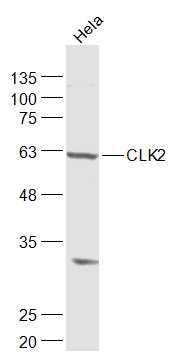
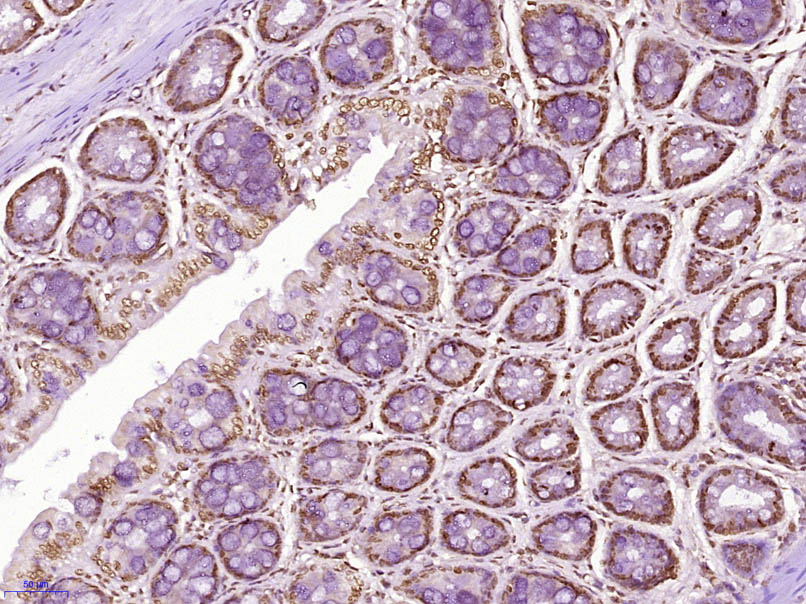
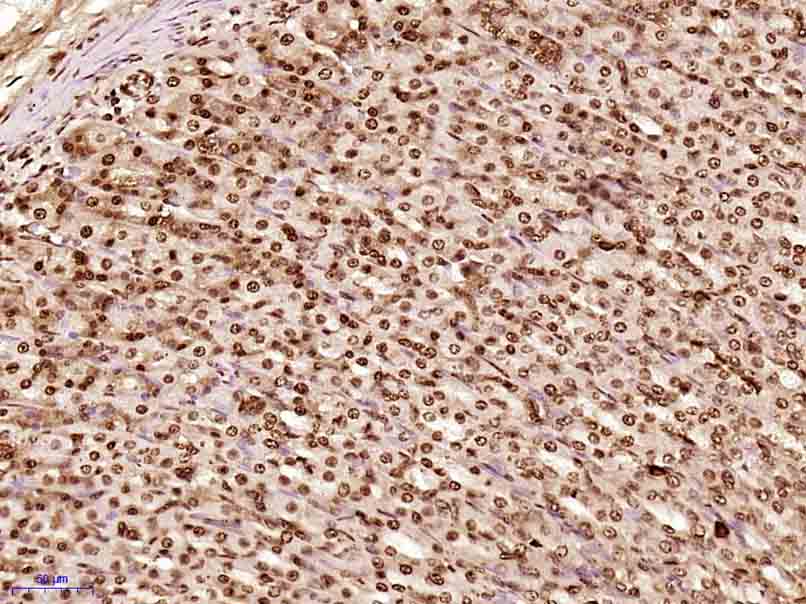
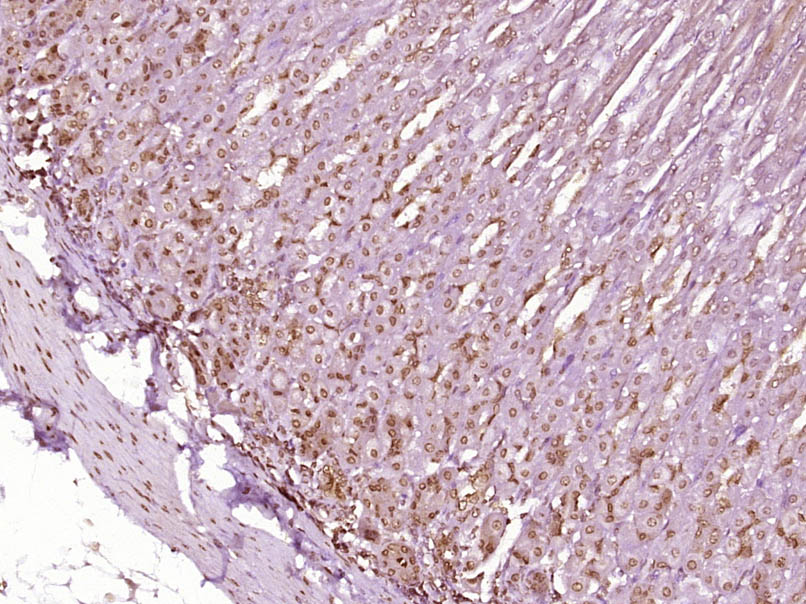
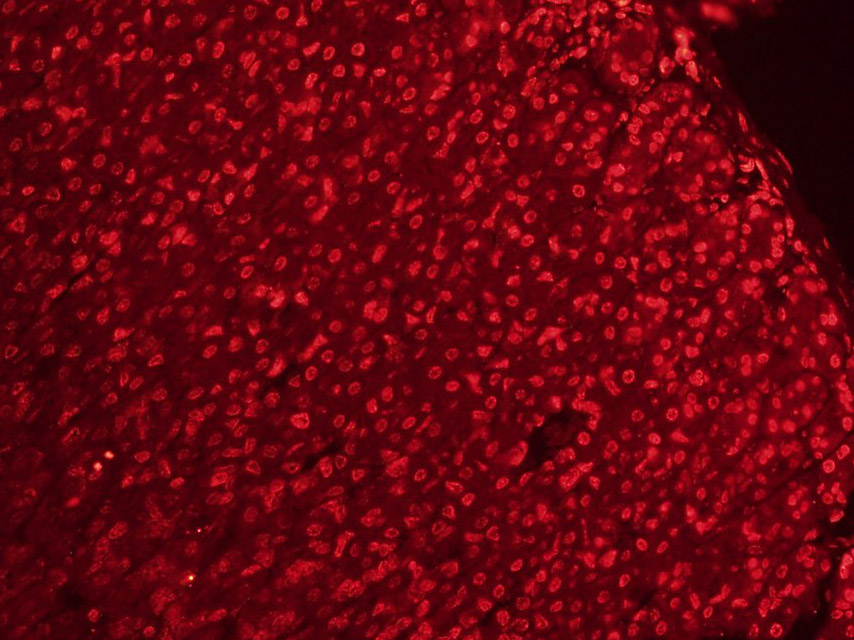
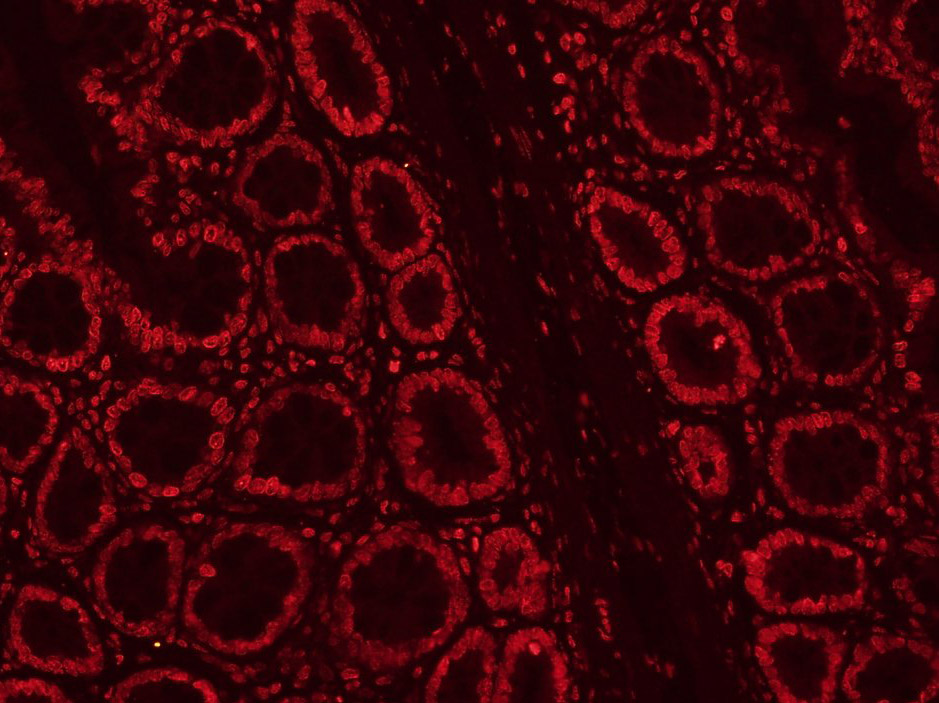


 +86 571 56623320
+86 571 56623320
 +86 18668110335
+86 18668110335

